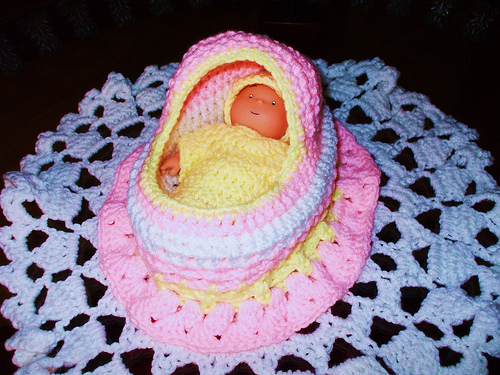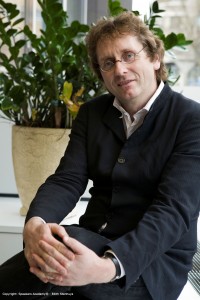Search Results for Tag: design
“No need to apologize for being on this planet”
Author: Kerstin Schnatz

Michael Braungart’s concept of zero waste is based on “cradle to cradle” rather than “from cradle to grave”
Photo credit: CC BY 2.0: Debbie(Woodlands Texas)/flickr.com: http://bit.ly/11JY1gl
He’s the man behind a number of quirky inventions – carpets that make the air cleaner, plastics free of toxic chemicals and underwear that can be tossed on the compost heap. What sounds like an eco-dream has already been turned into reality by Michael Braungart. The German chemist, who is professor of process engineering at Leuphana University of Lüneburg (Germany) and founder of the Environmental Protection Encouragement Agency (EPEA), aims to radically change the stuff around us. He offered an insight into his work at a conference hosted by the Heinrich-Böll-Foundation on inventions for a better tomorrow in Berlin on Thursday, June 6.

Michael Braungart, one of the founders of the chemistry division of Greenpeace, wants to “Re-Make the way we make things” with his philosophy of “Cradle to Cradle” (C2C).
Photocredit: Edith Stenhuys
Braungart’s concept “Cradle to Cradle” (C2C) is about reinventing the very composition of products, making pens, office chairs and even diapers really useful, re-usable and non-toxic. It’s a concept that knows no waste at all.
You think that buying organic food, producing less waste or driving a fuel efficient car are a good start for making our world greener? According to the 55 year-old, these choices are downright wrong. “If you hit your child only two rather than five times a day, you are still making a very bad choice.” Braungart says. Just like parents looking for less painful methods of educating their offspring, Braungart wants us to become good consumers. Rather than buying fewer clothes, for example to save on water, chemicals or CO2-emissions, we need to buy smarter apparel, he says. So, clothes that helps our skin breathe better and which can be easily recycled or composted when we don’t need them anymore.
Here’s Michael Braungart’s 2012 talk at TEDx
Unnoticed by most of us, Braungart’s revolution of stuff has already started: From underwear to office chairs and carpets over 1,100 products already carry a C2C label. However, the concept is highly disputed around the world. Even the title of his latest book “The Upcycle: Beyond Sustainability–Designing for Abundance” has raised hackles among many traditional ecologists striving for a more sustainable lifestyle. And his reply to those who want to reduce their CO2 footprint – a trend that many companies have adopted – is devastating: “You can only be carbon neutral if you stop breathing and don’t exist.”
Rather than a zero-emission footprint, he says it’s better to opt for what he calls a “beneficial footprint.” To Braungart, life is not about limiting yourself but about enjoying life – with the right kind of products. After all, he says, there is “no need to apologize for being on this planet.”
Solar Competition

Every 2 years, the U.S. Department of Energy hosts the Solar Decathalon in Washington D.C. It’s an international event where 20 different collegiate teams compete to see who can build the coolest, most energy-efficient, most stylish solar-powered home. As you can imagine, the students who take part are really inventive and creative, and the competition always boasts spectacular projects.
The New York Times already featured one team’s house, called the Empowerhouse, a ”shoebox-shaped mystery building.

The structure was put together in New Jersey by a team of students from the area using a combination of architecture, design, and green technology. The coolest thing? The house not only looks good, but it produces as much electricity as it uses every year – so a zero-emissions home.
But Empowerhouse is just one of the interesting designs being featured at this year’s Solar Decathalon competition. You can check out all the latest pictures and news, including news of the big winner when the competition ends, here.
May the best house win!
GLOBAL IDEAS design package nominated

picture by german design council
We already knew that the GLOBAL IDEAS design is beautiful. Our team did a great job on everything, the logos, that you can see on our website, the blog, twitter or on facebook. And also on the opening sequences of each of our tv-reports. Well, those talents have to be honored. The great thing is that our team has been nominated for the “Designpreis Deutschland 2012” by the German Design Council. And that is pretty huge. -> http://bit.ly/k0CnC8




Feedback